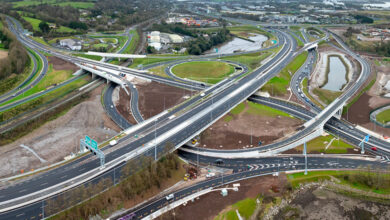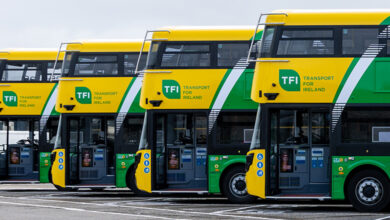National Cycle Network plan launched

The National Cycle Network (NCN) plan proposes a cycle network of approximately 3,500km, connecting more than 200 settlements and 2.8 million people nationally.
Developed in the context of national policies which recognise Ireland’s declaration of a climate emergency in 2019, the NCN plan aims to facilitate increased cycling and walking amongst leisure users, tourists, and commuters, as well as alleviate greenhouse gas emissions and facilitate implementing the commitments under the Climate Action and Low Carbon Development (Amendment) Act 2021.
Furthermore, Climate Action Plan 2024 highlights the need to facilitate a 50 per cent increase in daily walking and cycling journeys as part of the transport sector’s decarbonisation pathway.
Produced on behalf of the Department of Transport (DoT) and Transport Infrastructure Ireland (TII) with the support of AECOM Ltd, the NCN plan aims to “link cities and towns of over 5,000 people with a safe, connected and inviting cycle network”.
On a broader scale, the plan also has a vision to: “Develop a safe, connected, and inviting cycle network between urban areas and key destinations to achieve accessible, sustainable, and high-quality routes that will help reduce the carbon impact of transport and promote a healthy and inclusive society.”
To achieve the overall vision, the development of the plan was informed by an assessment of the existing and planned cycle of networks, an analysis of population densities, and likely travel demand.
The NCN plan aims to ensure that 80 per cent of households and 89 per cent of jobs are located within five kilometres of the network. Furthermore, the plan aims to provide “an excellent level of connectivity nationally”. With 400 kilometres of the NCN currently in use as existing greenways and cycling infrastructure, and over 900 kilometres included in the National and Regional Greenways Programme, the remaining 2,200 kilometres will require new infrastructure outside of current programmes and funding.
Community commitments
As well as contributing to Ireland’s commitments to sustainability and decarbonisation, the NCN plan states that successful implementation will provide many benefits for cyclists and communities, including:
• ensuring delivery of a high-quality cycle network which will promote safety, comfort, and increased participation in cycling;
• improving sustainable connectivity nationally through providing links with other networks such as CycleConnects, EuroVelo, and networks in the North;
• supporting both urban and rural economies through increased leisure and tourism cycling;
• improving public health through the well-documented benefits of active travel;
• guiding how local authorities prioritise investment in cycling infrastructure nationally; and
• making use of existing infrastructure wherever possible including greenways, road infrastructure and declassified roads where safe and appropriate cycle experiences can be achieved.
Focusing on the design principles for the NCN, the defining characteristic of the preferred infrastructure is that routes are all segregated, thus “allowing cyclists to travel in their own space, away from road vehicles with a higher level of safety and comfort”.
Implementation
The NCN will be planned and delivered as a single programme, rather than a series of inter-related projects. This method aims to ensure an integrated approach to delivery. The focus of the delivery programme will be on providing a coherent network, with regional balance.
An indicative cost estimate for the delivery of the NCN is between €1.49 billion and €1.91 billion, depending on the infrastructure types used across the network.
Approximately €30 million will be required to upgrade the existing infrastructure to the NCN design standard, including additional signage. The cost of planned greenways is €940 million while the remaining infrastructure would cost between €520 million and €940 million, depending on the type of infrastructure required.
Evaluation and delivery
The aim for delivery of the NCN is due to be across three phases from 2023 to 2040. To achieve this target, various corridors have been assigned to each delivery phase based on the results of a multicriteria assessment, which considered a range of factors, including “potential demand along each corridor, corridor length, network coherence, safety, and social benefits”.
The NCN plan states that “environmental considerations and evaluation were integral to the development of the NCN Plan”. Strategic Environmental Assessment (SEA) and Appropriate Assessment (AA) will aim to guide development to achieve its ambitions.
Commenting on the NCN plan, Minister for Transport Eamon Ryan TD stated: “This national cycling network will act as a core spine, connecting towns, cities, and destinations across the country with safe, segregated cycling infrastructure wherever feasible. I think this will really help to encourage cycling confidence and in turn the number of trips taken by both walking and cycling amongst locals, leisure users, and tourists alike.”
Peter Walsh, Chief Executive of Transport Infrastructure Ireland, said: “The national cycle network will open in phases throughout the country in the coming years. It will provide a safe and enjoyable way for people to travel, and it will support a more sustainable future for the country.”





